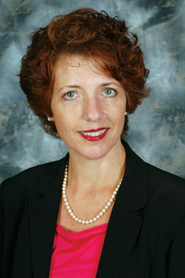Today three-quarters of institutional long-only buyside firms are using commission sharing arrangements, or CSAs, and that percentage is expected to grow in 2011.
According to a new survey, one-third of the firms that don’t use CSAs to pay their research bills will begin doing so this year. The reason for the rising use of CSAs is that the buyside wants greater freedom to trade wherever it wants, to ensure its research bills get paid.

The new study reported that while 76 percent of U.S. buyside firms are using CSAs, 24 percent do not. Of the firms that said they do not use CSAs, 37 percent expect to have these agreements in place by year end, said Laurie Berke, principal at Tabb Group and author of the study "Trading for Alpha 2011: CSAs in U.S. and Europe."
"CSAs make it much easier to pay for research due to their flexibility and transparency," said Mark Kuzminskas, director of equity trading at Robeco, a Boston-based money management firm. "CSAs are an integral component to our commission management practices and contribute to best execution."
According to a May 2010 Greenwich Associates report, 22 percent of commission payments on domestic stock trades were paid through CSAs. This was virtually unchanged from 2009.
At its heart, the trend reflects today’s economics of the commissions spend. As commissions are getting lower, the buyside has become even more selective about which brokers and how many get a slice of the decreasing revenue pie. For 2010 and 2011, 50 percent of U.S. buyside firms are pushing all of their CSA commission allocations through fewer than 10 CSA brokers. The average buyside firm uses about nine brokers.
"The economic significance of the increased commission concentration is the elephant in the corner of the equity trading room," Berke wrote in the report.
Kuzminskas said his trading flows bear out the report’s figures. He said the most notable observation resulting from his firm’s usage of CSAs is the fact that his desk has increased its trading with his top 10 brokers. His list has roughly 75 brokers on it.
Given the recent decline in commissions, CSA use continues its upward trajectory. The last report, in 2009, noted that 65 percent of U.S. long-only firms used CSAs, up from 58 percent in 2008. In 2007, only 40 percent of the buyside used CSAs.
During this same time, Berke said, U.S. commission equity revenue in 2010 was $8.37 billion, down 21 percent from the $10.58 billion seen in 2009. She projected 2011 commissions to drop about 17 percent in 2011 from 2010’s levels, or to $7.25 billion.
This drop is driving the buyside to be more selective as to which brokers it uses–namely, ones that either have research, such as the bulge bracket and regional firms, or who have access to it, like ITG or Liquidnet. Execution-only brokers will have a hard time competing for business, Berke said. The buyside is placing more value on getting alpha-generating ideas from its brokers, she added, as execution costs have become highly commoditized–and cheap.
"The large global investment banks can afford to continue to spend on technology; they are full-service providers with research and investment banking, and they have a global reach," Berke wrote. "The execution-only firms will struggle unless they can buy or partner to give clients a reason to trade."
Berke said the from 2002 to 2007, a period of low volatility and a rising equities market, firms began shaving basis points off trading costs to maximize revenue. They pushed down trading costs by shifting to electronic trading, algos and smart order routers. However, that has changed as the alpha-generating ideas the buyside seeks come from research, not execution.
According to the report, half of U.S. buyside traders surveyed expect the percentage of the CSA commission on a ticket that goes to pay for execution will go down, while the percentage that goes out the back door to pay for alpha will rise.
"You have greater percentage of flow going through the CSAs and less money staying with the executing broker," Berke told Traders Magazine. "Again, there is pressure to get the execution piece of the commission as low as possible and leave as much to pay for alpha-generating ideas."
The buyside, she said, is focused on generating "significant alpha," to get the retail investor back and replace assets under management that were lost as a result of the financial crisis. Until assets under management climb back to pre-crisis levels, the buyside’s goal is to pay as much as it can to the firms that are delivering the best performing ideas–those that improve investors’ bottom line.
"There is a big need to pay for real value, such as research ideas, corporate access, IPOs and analysts’ calls," Berke said. "All the things the portfolio manager uses."
However, there are some that choose not to use CSAs. Joe Burello, a trader at Ironbridge Capital, said at a recent conference that his desk does not use CSAs because his compliance team is not comfortable with them. So instead, his firm pays for research with a check when they want.
In the study, Tabb interviewed 121 institutional equity management firms, including 68 head traders in the U.S., managing an aggregate of $12.9 trillion.



